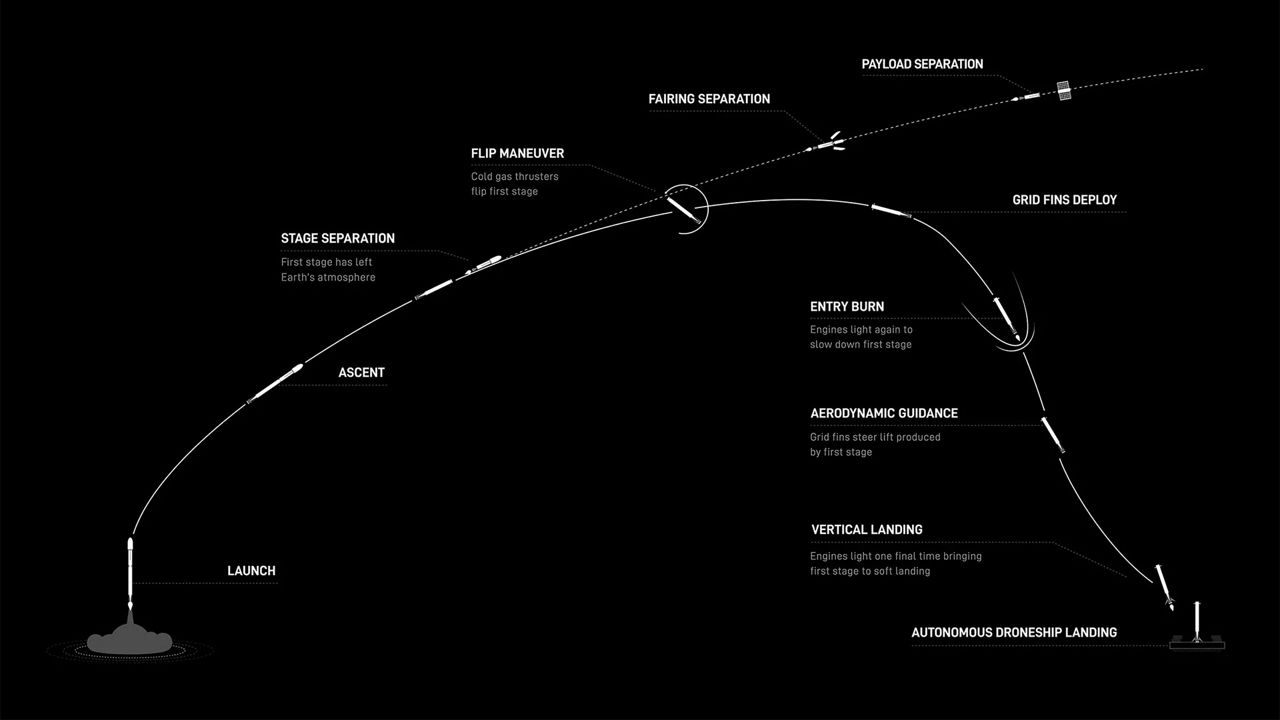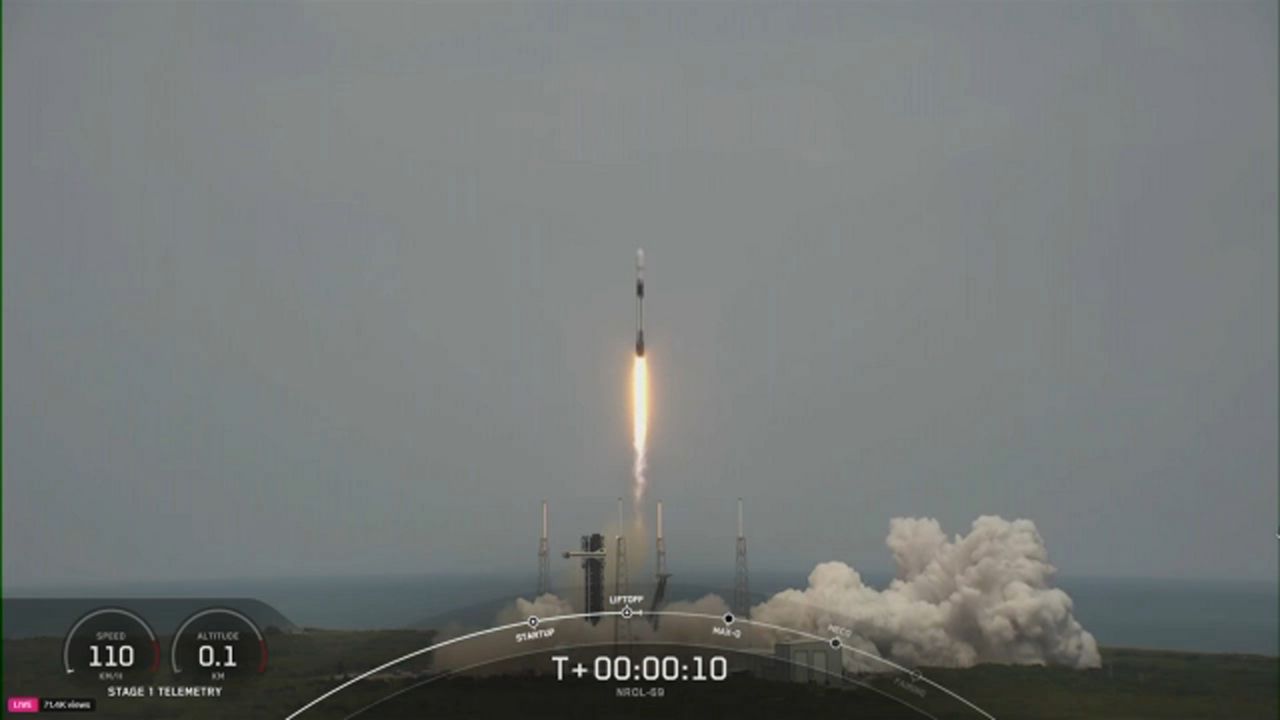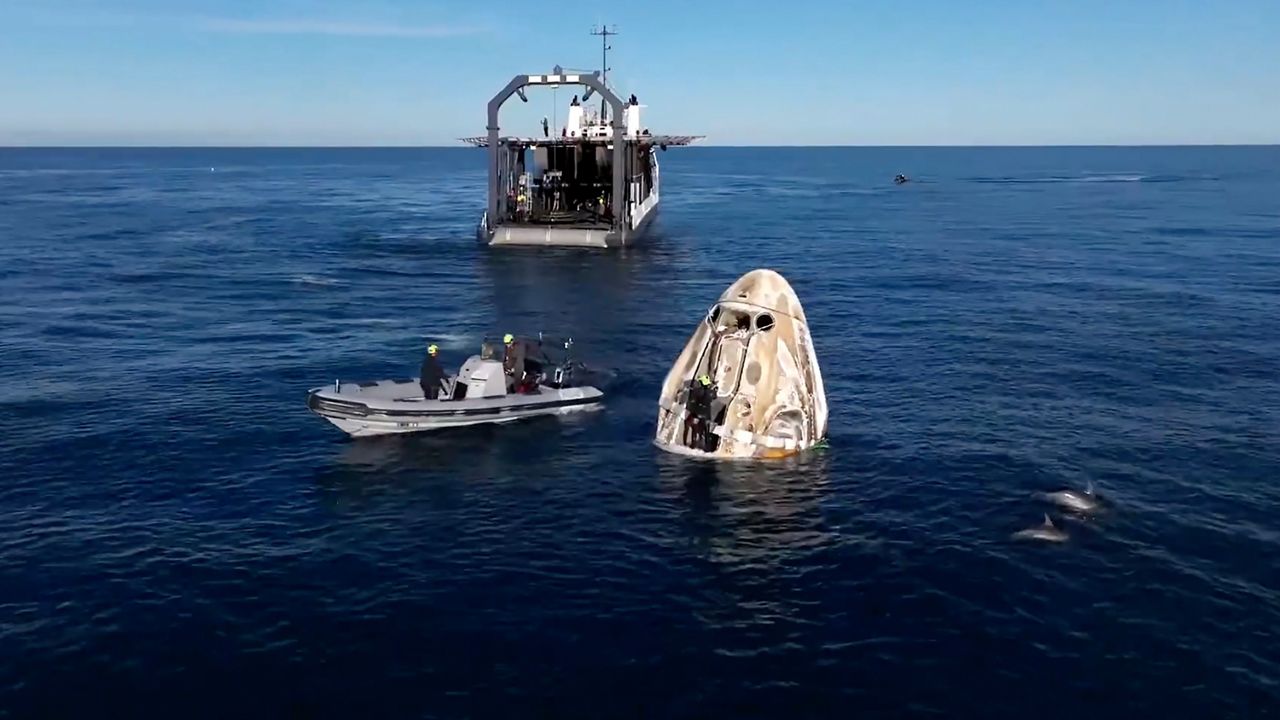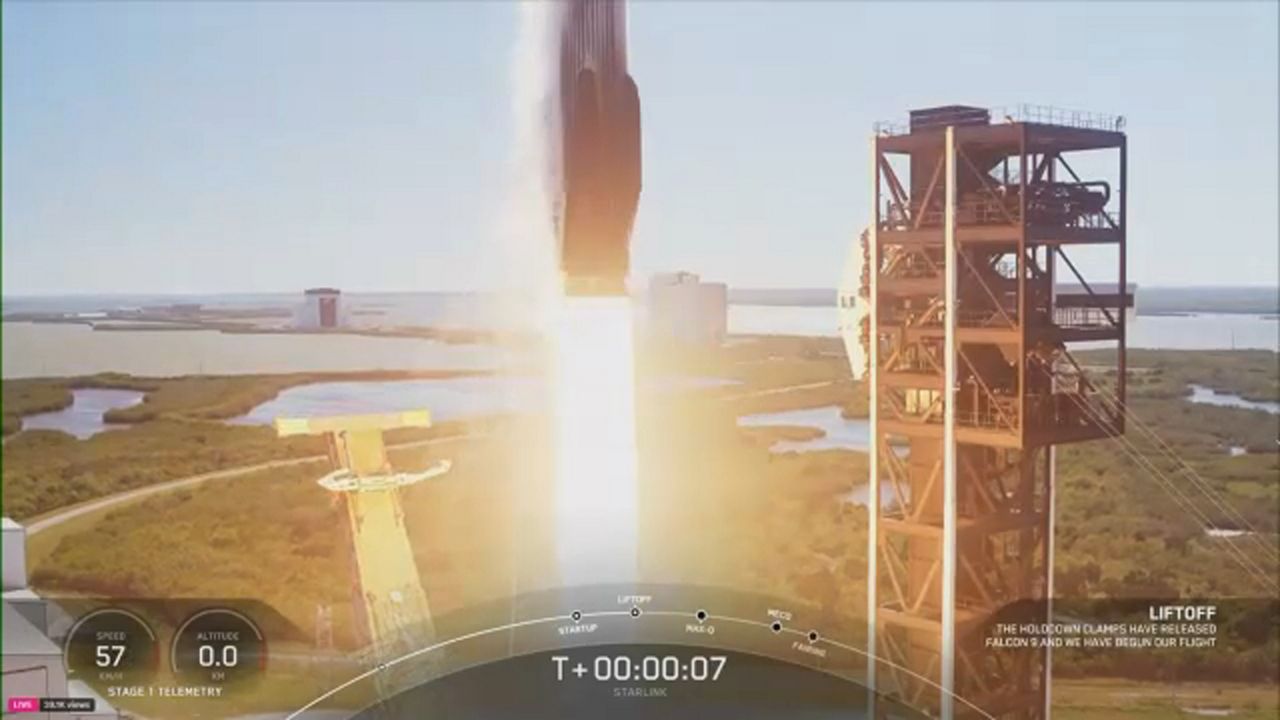CAPE CANAVERAL SPACE FORCE STATION — Despite the concerns of liftoff winds, SpaceX was able to send up 20 Starlink satellites Friday night.
What You Need To Know
- SpaceX sends up its Falcon 9 rocket from Space Launch Complex 40 at Cape Canaveral Space Force Station
- Thursday night's launch attempt was canceled due to weather concerns
SpaceX sent up its Falcon 9 rocket from Space Launch Complex 40 at Cape Canaveral Space Force Station, stated the company.
The launch window for the Starlink 8-19 mission opened at 7:31 p.m. ET.
The 45th Weather Squadron was giving a 40% chance for takeoff, with liftoff winds being the concern.
This means that either the winds were a concern for liftoff or when the Falcon 9 first-stage booster attempted to land SpaceX’s droneship Just Read the Instructions that is out in the Atlantic Ocean, or both.
If the launch was scrubbed, the next attempt would have been on Saturday night.
Poor weather scrubbed Thursday night’s launch attempt, with the squadron giving a 50% chance to take off.
Find out more about the weather criteria for a Falcon 9 launch.
Going up
This is the 17th mission for this Falcon 9's first-stage booster, called B1076. Its sweet 16 missions have been:
- CRS-26
- OneWeb Flight 16
- Intelsat IS-40e
- Starlink Group 6-1 mission
- Starlink Group 6-3 mission
- Starlink Group 6-6 mission
- Starlink Group 6-14 mission
- Starlink Group 6-21 mission
- SES O3B-mPOWER
- Ovzon-3
- Starlink Group 6-40 mission
- Eutelsat 36D
- Starlink 6-54
- Starlink Group 6-64 mission
- Turksat 6A
- Maxar 2 mission
After the stage separation, the booster landed on the droneship.

About the mission
The 20 satellites from the Starlink company, owned by SpaceX, will be heading to low-Earth orbit to join the thousands already there.
Dr. Jonathan McDowell, of Harvard-Smithsonian Center for Astrophysics, has been recording Starlink satellites.
Before this launch, McDowell recorded the following:
- 6,458 are in orbit
- 6,150 are in operational orbit




)





